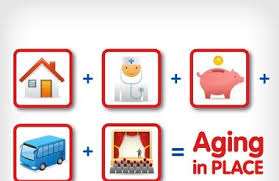Older adults can save tens of thousands of dollars annually by choosing assisted living communities over aging in place in their homes.
Unlike point solutions, Inspiren unifies resident safety, care planning, staffing, and emergency response into a single AI-powered platform.
An artificial intelligence-powered virtual assistant platform for senior living and care providers.

 Who doesn’t want to live in their 'forever' home? After all,
Who doesn’t want to live in their 'forever' home? After all,
Comments
Love your work
Hi Laurie,
Great points and references!
I wanted to share a tiny bit about Irene and hope to connect with you soon. We set out to build a safer alternative to reverse mortgages. The foundation of the product comes from Italy and France - homeowners sell their remainders interest in their home and reserve a life estate. To deliver on the promise of peace of mind- we actively manage the property and cover taxes and insurance. Would love to hear your feedback and discuss sharing some of your work on our site.
Best,
Wilson
The worlds first virtual caregiver?
It sounds like a something out of a futuristic movie, and yet it’s real and it’s here today. A virtual caregiver, the next level of virtual assistants. She’s more than a table top speaker grill!
She’s got a face, a body, human gestures, dilating pupils, a compassionate smile, a swag set of scrubs, a dynamic personality, and she shows up at your door with a bag in her hand filled with state of the art health peripherals. Her name is Addison and her advancing communication skills integrate with wireless technology and medical plans of care, giving her the ability to be not only an endearing companion, but a virtual health and wellness partner.
Addison is designed to monitor, to collect vitals and responses to examination questions, to assess, and to identify indications of health stability, improvement or decline. Addison Care is a combination of conversational speech, animation technology, AI based visual sensing, augmented reality, wireless interactive assistive devices, a cloud based, proprietary enterprise management platform, and almost too many coordinated technologies to list. Addison is making her world debut alongside her Amazon partners at CES2019 in Las Vegas. You don't want to miss it. She will change the face of safe aging-in-place for decades to come!
Aging in Place
I'm wondering why the recent article doesn't mention the "village" concept as a viable option for those hoping the age in place. Having started in Boston, there are now over 400+ virtual villages nationwide using volunteers and a community to help seniors stay engaged and help with transportation and other tasks around the home.
https://www.ageinplacetech
https://www.ageinplacetech.com/search/site/Village